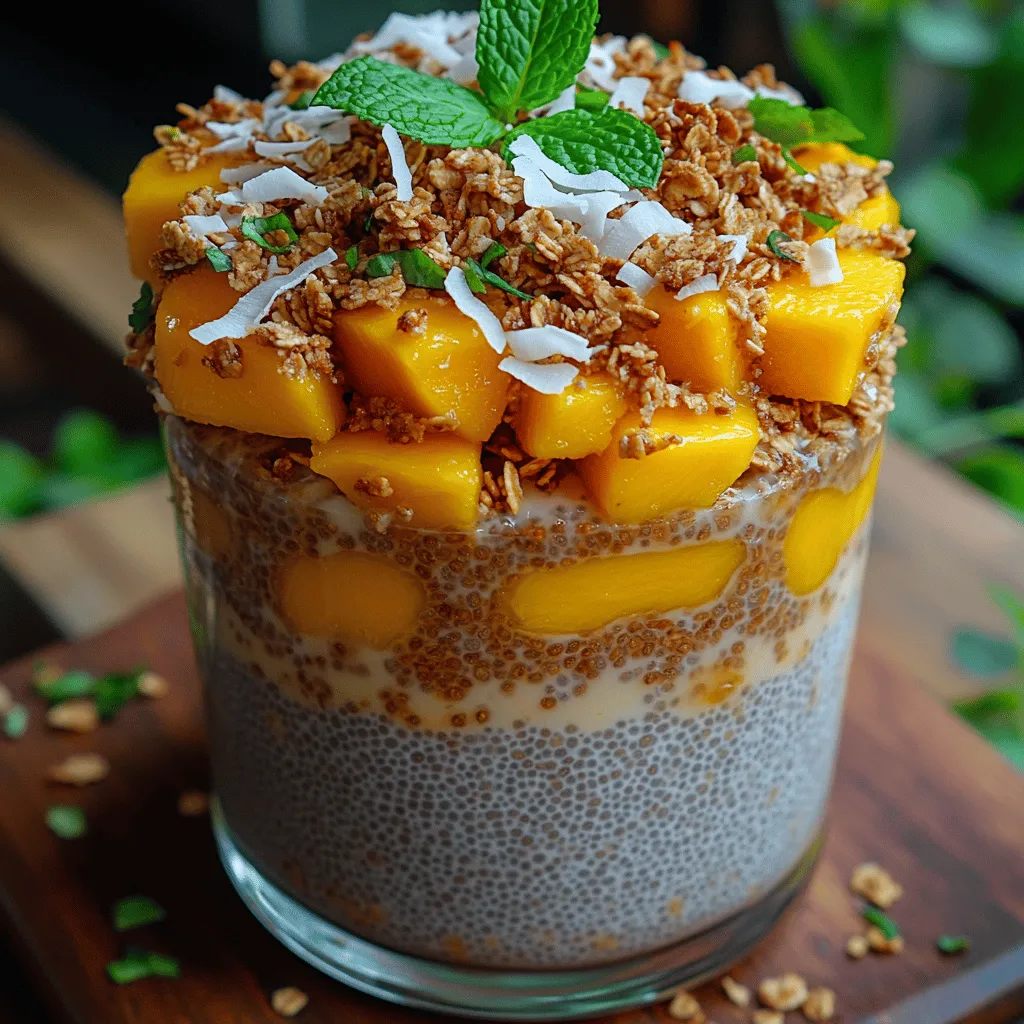Introduction
Spaghetti Carbonara is a classic Italian dish that has captivated the hearts and taste buds of food lovers all over the world. This creamy pasta dish, which hails from the Lazio region, specifically Rome, is celebrated for its rich flavors and simple yet luxurious ingredients. With its origins steeped in history, Spaghetti Carbonara is more than just a meal—it’s a culinary tradition that showcases the beauty of Italian cooking.
The history of Spaghetti Carbonara is somewhat murky, with various theories surrounding its inception. Some believe it was created by Italian charcoal workers, known as “carbonai,” who would prepare a hearty meal to sustain their long hours in the woods. Others suggest that it emerged after World War II, influenced by American soldiers who brought bacon and eggs to Italy. Regardless of its origins, one thing is clear: Spaghetti Carbonara has become a beloved staple in Italian cuisine and beyond.
One of the key elements that sets this dish apart is the importance of using authentic ingredients. Traditional Spaghetti Carbonara relies on just a handful of high-quality components, including guanciale, Pecorino Romano cheese, fresh eggs, and, of course, spaghetti. Each ingredient plays a crucial role in creating the dish’s signature creamy texture and bold flavors. In this guide, we’ll delve into what makes this recipe special and provide you with all the information you need to create the perfect Spaghetti Carbonara at home.
Understanding the Key Ingredients
To master Spaghetti Carbonara, it’s essential to understand the traditional ingredients that contribute to its unique flavor profile. Let’s take a closer look at each component and why they are vital for an authentic experience.
Spaghetti: Types and Cooking Tips
The star of the dish, spaghetti, is a long, thin pasta that provides the perfect vessel for the rich sauce. While there are many types of pasta available, choosing the right one is crucial. For a classic Carbonara, opt for high-quality dried spaghetti made from durum wheat semolina. This type of pasta holds up well during cooking and has the ideal texture to pair with the sauce.
When cooking spaghetti, it’s important to achieve an al dente texture, which means the pasta should be slightly firm when bitten. This not only enhances the overall eating experience but also allows the pasta to absorb some of the sauce’s flavors. To achieve the perfect al dente spaghetti, follow these tips:
– Salt the water generously: The cooking water should taste like the sea. A general rule of thumb is to use about 1-2 tablespoons of salt per gallon of water.
– Boil the water before adding pasta: Ensure your water reaches a rolling boil before adding the spaghetti. This helps the pasta cook evenly.
– Cook according to package instructions: While timing may vary, start checking the pasta a minute or two before the recommended cooking time to ensure you achieve the desired texture.
Guanciale: Importance of Using This Specific Cured Meat
One of the defining features of Spaghetti Carbonara is the use of guanciale, a type of Italian cured meat made from pig jowl or cheeks. Guanciale is essential for achieving the dish’s authentic flavor, as it provides a rich, savory depth that cannot be replicated by other types of meat. The fat in guanciale melts beautifully, creating a luscious sauce that envelops the pasta.
If you cannot find guanciale, you may substitute it with pancetta or unsmoked bacon, but be aware that these alternatives will alter the flavor profile slightly. When using guanciale, it’s important to cut it into small pieces—about 1/2-inch cubes—to ensure even cooking and distribution throughout the dish.
Pecorino Romano: Flavor Profile and Alternatives
Pecorino Romano cheese is another crucial ingredient in Spaghetti Carbonara. This hard, salty cheese made from sheep’s milk adds a distinct tanginess that elevates the dish’s overall flavor. The sharpness of Pecorino Romano complements the richness of the guanciale and the creaminess of the eggs, creating a well-balanced sauce.
When using Pecorino Romano, it’s best to grate it fresh for optimal flavor and texture. If you cannot find this cheese, you can substitute it with Parmigiano-Reggiano, although the flavor will be milder and less salty.
Fresh Eggs: Role in the Creaminess of the Sauce
Fresh eggs are the secret ingredient that gives Spaghetti Carbonara its signature creaminess without the need for heavy cream. The combination of egg yolks and cheese creates a silky sauce that clings to the pasta beautifully. It’s important to use fresh, high-quality eggs, as they will contribute to the overall flavor and texture of the dish.
To achieve the perfect sauce, use a combination of whole eggs and additional yolks. The ratio typically recommended is 1 whole egg for every 100 grams of pasta, along with an extra yolk for added richness. Be sure to whisk the eggs and cheese together until smooth before combining them with the pasta.
Black Pepper: The Finishing Touch
The final touch that ties everything together in Spaghetti Carbonara is freshly cracked black pepper. A generous sprinkle of black pepper not only adds a hint of spice but also enhances the dish’s overall flavor profile. For the best results, use whole peppercorns and grind them just before serving to release their aromatic oils. The combination of the creamy sauce, savory guanciale, and the heat from the black pepper creates a harmonious balance that defines this beloved Italian classic.
Preparation Steps for Spaghetti Carbonara
Now that we have a clear understanding of the key ingredients, let’s move on to the preparation steps for making a delicious Spaghetti Carbonara. Follow these instructions carefully to ensure a successful outcome.
Cooking the Pasta
The first step in making Spaghetti Carbonara is to cook the pasta. Begin by bringing a large pot of salted water to a rolling boil. As mentioned earlier, aim for about 1-2 tablespoons of salt per gallon of water. Once the water is boiling, add the spaghetti and stir to prevent it from sticking. Cook according to the package instructions, usually around 8-10 minutes, but start checking for doneness a minute or two early.
Importance of Al Dente Texture
As you cook the pasta, keep an eye on the texture. You want the spaghetti to be al dente, which means it should have a slight bite when tasted. This is crucial because the pasta will continue to cook slightly when mixed with the sauce. Once the pasta reaches the desired al dente texture, reserve about 1 cup of the pasta cooking water and then drain the rest.
Salting the Water: How Much is Enough?
Salting the pasta water is an essential step that many home cooks overlook. The salt enhances the flavor of the pasta itself, ensuring that every bite is seasoned well. As a general guideline, you should use about 1-2 tablespoons of salt for every gallon of water. Taste the water before adding the pasta; it should be salty but not overpowering.
Preparing the Guanciale
While the pasta is cooking, you can prepare the guanciale. Cut the guanciale into small cubes or strips, about 1/2 inch in size. This allows for even cooking and ensures that the fat renders properly.
Cutting Techniques for the Perfect Bite
To achieve the perfect bite, consider the size of the guanciale pieces. They should be small enough to provide rich flavor without being overwhelming. Aim for uniform pieces to ensure even cooking and a balanced distribution throughout the pasta.
Rendering Fat: Best Practices for Flavor
Once the guanciale is cut, place it in a large skillet over medium heat. Allow the guanciale to cook slowly, stirring occasionally, until it becomes crispy and golden brown, and its fat has rendered out. This process typically takes about 5-7 minutes. The rendered fat is what will form the base of your sauce, so be sure not to rush this step. The goal is to achieve a crispy texture while allowing the flavorful fat to accumulate in the pan.
Creating the Sauce
With the guanciale prepared and the pasta cooked, it’s time to create the sauce. In a separate bowl, whisk together the fresh eggs and grated Pecorino Romano cheese until smooth. This mixture will form the creamy sauce that beautifully coats the pasta.
Mixing Eggs and Cheese: Ratios for Creaminess
The key to a creamy sauce lies in the right ratio of eggs to cheese. For every 100 grams of spaghetti, use one whole egg and one additional yolk. This combination provides richness without being overly heavy. As you whisk the eggs and cheese together, the mixture should become thick and creamy.
The Role of Residual Heat in Sauce Creation
Once the pasta is drained, immediately add it to the skillet with the crispy guanciale, ensuring that the skillet is off the heat to prevent scrambling the eggs. Quickly pour the egg and cheese mixture over the hot pasta, tossing vigorously to combine. The residual heat from the pasta will gently cook the eggs, creating a velvety sauce that clings to each strand.
By following these steps, you’ll be well on your way to creating an authentic and delicious Spaghetti Carbonara that honors the traditional recipe while tantalizing your taste buds.
Combining the Ingredients
To achieve the perfect Spaghetti Carbonara, timing is crucial, particularly when combining the pasta and sauce. Once your spaghetti is al dente, it’s essential to work swiftly to preserve the creamy texture of the sauce. Here’s how to effectively combine the ingredients for a flawless dish:
Timing: When to Combine Pasta and Sauce
After cooking your spaghetti, reserve about a cup of the pasta water before draining. This starchy water is vital for achieving that silky, creamy consistency that Carbonara is known for. The ideal moment to combine the pasta with the sauce is immediately after draining, while the pasta is still hot. The residual heat from the pasta will help emulsify the sauce, allowing it to cling beautifully to each strand.
Techniques for Achieving the Perfect Creamy Consistency
To ensure a creamy texture without scrambling the eggs, follow these steps:
1. Egg Mixture: In a bowl, whisk together the egg yolks, whole eggs, grated Pecorino Romano cheese, and freshly cracked black pepper until smooth and creamy.
2. Combine Off Heat: After draining the pasta, transfer it back to the pot off the heat. This is crucial; direct heat can cook the eggs too quickly, leading to a scrambled texture instead of a silky sauce.
3. Incorporate Gradually: Pour the egg and cheese mixture over the hot pasta, tossing continuously. The heat from the pasta will gently cook the eggs, creating a creamy sauce. If the mixture seems too thick, gradually add reserved pasta water until you reach the desired consistency.
Importance of Adding Pasta Water: How It Enhances the Dish
Pasta water is not just a thickener; it’s a flavor enhancer. The starch in the water helps to bind the sauce to the pasta, providing a velvety finish. Start by adding a couple of tablespoons of the reserved water, and mix thoroughly. Continue to add more as needed until the sauce reaches your preferred creaminess. The final result should be a glossy, well-coated spaghetti that clings to the fork.
Serving Suggestions
Presentation can elevate your Spaghetti Carbonara from a simple dish to a gourmet experience. Here are some tips to serve it beautifully:
Ideal Plating Techniques for Spaghetti Carbonara
Use a large fork or pasta tongs to twist a portion of the spaghetti into a nest shape. Place this nest in the center of a warmed plate for a restaurant-style presentation. This not only looks appealing but also encourages diners to enjoy the dish at a leisurely pace.
Garnishes That Complement the Dish
A sprinkle of extra Pecorino Romano cheese on top adds a salty kick and enhances the dish’s visual appeal. Freshly cracked black pepper is essential for that signature Carbonara flavor. For a touch of color, consider adding a sprig of fresh parsley or basil, finely chopped, as a garnish. These not only enhance the look but also add a fresh aroma and flavor contrast.
Wine Pairings That Elevate the Dining Experience
To complement your Spaghetti Carbonara, consider a light to medium-bodied white wine. A Pinot Grigio or a Soave pairs beautifully, balancing the richness of the dish with crisp acidity. If you prefer red, a light Chianti could work well without overpowering the flavors of the Carbonara.
Common Mistakes to Avoid
Achieving the perfect Spaghetti Carbonara requires precision. Here are some common pitfalls to avoid:
Overcooking the Pasta: Consequences and Solutions
Overcooked pasta can lead to a mushy texture, which detracts from the dish’s overall appeal. Always cook your spaghetti until it’s al dente, meaning it should still have a slight bite. To ensure you don’t overcook, check the pasta a minute or two before the package instructions indicate and taste it. If it’s done, immediately drain and proceed with combining it with the sauce.
Using the Wrong Type of Cheese: Impact on Flavor
Authentic Carbonara relies on Pecorino Romano cheese for its distinct flavor profile. Substituting with other cheeses, such as Parmesan, can alter the dish’s authenticity. While Parmesan can still work in a pinch, it lacks the sharpness and saltiness that Pecorino brings. If you can’t find Pecorino, consider a blend of Pecorino and Parmesan for a balanced flavor.
Cooking the Eggs Too Much: How to Avoid Scrambled Eggs
The key to a successful Carbonara sauce is to avoid scrambling the eggs. This means you should never add the egg mixture to the pasta while it’s on direct heat. Always combine off the heat, and remember to mix continuously as you add the egg mixture. The residual heat from the pasta should be enough to cook the eggs gently, creating a creamy sauce rather than a scrambled mess.
Variations of Spaghetti Carbonara
While traditional Spaghetti Carbonara is beloved for its simplicity, there are several delicious variations to explore:
Vegetarian Adaptations: Ingredients to Use
For a vegetarian version of Carbonara, you can replace pancetta or guanciale with sautéed mushrooms or smoked tofu. Mushrooms, particularly shiitake or portobello, add a rich umami flavor that mimics the savory notes of meat. Consider adding peas or roasted asparagus for a pop of color and added nutrition.
Alternative Meats: Bacon or Pancetta Options
If you can’t find guanciale, pancetta is a suitable alternative. Alternatively, crispy bacon can also work, though it will impart a different flavor profile. When using bacon, choose a high-quality, thick-cut variety to ensure a meaty bite that complements the creamy sauce.
Unique Twists: Adding Vegetables or Spices
For those looking to experiment, consider incorporating vegetables such as zucchini or spinach for added nutrients. A pinch of nutmeg can also provide a subtle warmth and depth of flavor. If you enjoy spice, a dash of red pepper flakes can add a delightful kick.
Nutritional Information
Understanding the nutritional content of your Spaghetti Carbonara can help you make informed choices, especially when accommodating dietary needs.
Overview of the Nutritional Value Per Serving
A typical serving of Spaghetti Carbonara contains approximately 600-700 calories, depending on ingredient proportions. The dish is rich in protein from the eggs and cheese, providing essential amino acids.
Discussion on the Balance of Protein, Carbs, and Fats
Carbonara is a well-balanced meal, consisting of carbohydrates from the pasta, protein from eggs and cheese, and fats from the meat (or oil, if vegetarian). A serving typically contains around 25 grams of protein, 70 grams of carbohydrates, and 30 grams of fat. This balance makes it a hearty option, suitable for a filling lunch or dinner.
Considerations for Dietary Restrictions
For those with dietary restrictions, such as gluten intolerance, gluten-free pasta can be used as a substitute. Additionally, lactose-free cheese options can work for individuals who are lactose intolerant. Always check ingredient labels and adjust recipes as necessary to accommodate dietary needs.
Conclusion
Spaghetti Carbonara is more than just a pasta dish; it is a celebration of Italian culinary tradition that combines simple ingredients to create a rich and satisfying meal. By mastering the techniques and avoiding common mistakes, you can enjoy an authentic Carbonara experience in the comfort of your home.
As you experiment with variations and personal touches, remember to respect the essence of the traditional recipe. This classic dish invites creativity while honoring its roots, making it a timeless favorite for any pasta lover. Enjoy the process of cooking, and savor each bite of this indulgent yet simple Italian treasure.


